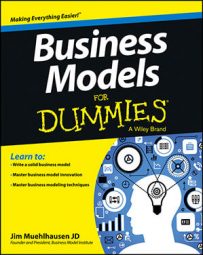The most profitable industrial product of all time is the Xerox copier. During the 1960s and 1970s, margins on the product were obscene. The copiers were so profitable that Xerox quickly determined that selling the copiers was a bad business model, because the entire cost of the copier could be paid off in a few months of rent. Xerox had no competition, huge demand, and a proprietary product.
The product created so much cash flow that Xerox struggled to invest the money into the business. With a small portion of the profits, Xerox created the famed PARC research facility. As a result of Xerox’s research efforts, consumers now enjoy the mouse, laser printer, Ethernet, PCs, graphical user interface (GUI), object-oriented programs, and amorphous silicon applications created by PARC.
Unfortunately, you can’t generate superior margin by simply asking your customers to pay more. You have to earn it. Ask yourself, “Why does a customer pay more for an item than it costs to make it?” Here are some answers:
Access: You can’t buy gasoline at the refinery or lumber at the sawmill.
Branding: Take a $29 pair of eyeglasses and slap Jennifer Lopez’s name on the side and they transform into $129 glasses.
Convenience: You can drive to Alabama and buy shrimp off the boat, but it’s a long drive from New York.
Desire: You don’t need a vacation, but when you want one badly enough, you’ll pay a premium.
Feelings: That cup of Starbucks coffee should cost only $0.50, but it makes you feel so good that you pay much more.
Problem-solving: That bandage may cost only a few pennies, but it’s worth thousands of dollars if you’re bleeding badly.
Proprietary features/patents: The patent on the original Xerox 914 copier gave the company a 15-year stranglehold on the photocopier market. The iPhone leapfrogged other smartphones in feature set; it captured a large market share and sold for a significant price premium.
Rolls-Royce aircraft engines have a turbine blade made from a secret super-strong material made by Rolls-Royce for their engines. Coca-Cola’s secret formula ensures that no other soft drink can taste like Coke.
Status: The only difference between the top-of-the-line Camry and the cheapest Lexus is the L on the front — and $2,500.
Value chain: Walmart manages portions of the value chain such as logistics more efficiently than the competition and enjoys better margin as a result. For instance, Walmart discourages the use of sales representative agencies as an added cost that must be passed to consumers. Walmart also manages inbound and outbound logistics with Swiss-like precision to avoid adding unnecessary distribution cost.
How effectively you employ these factors determines your margin. Of course, you aren’t operating in a vacuum. These factors are relative to the competition. Your competitors are busy trying to accomplish the exact same thing — better margins. As they improve their business model, it becomes harder to improve yours. This never-ending treadmill can be frustrating. You need to outsmart and out-innovate your competition in order to consistently generate superior margin.

